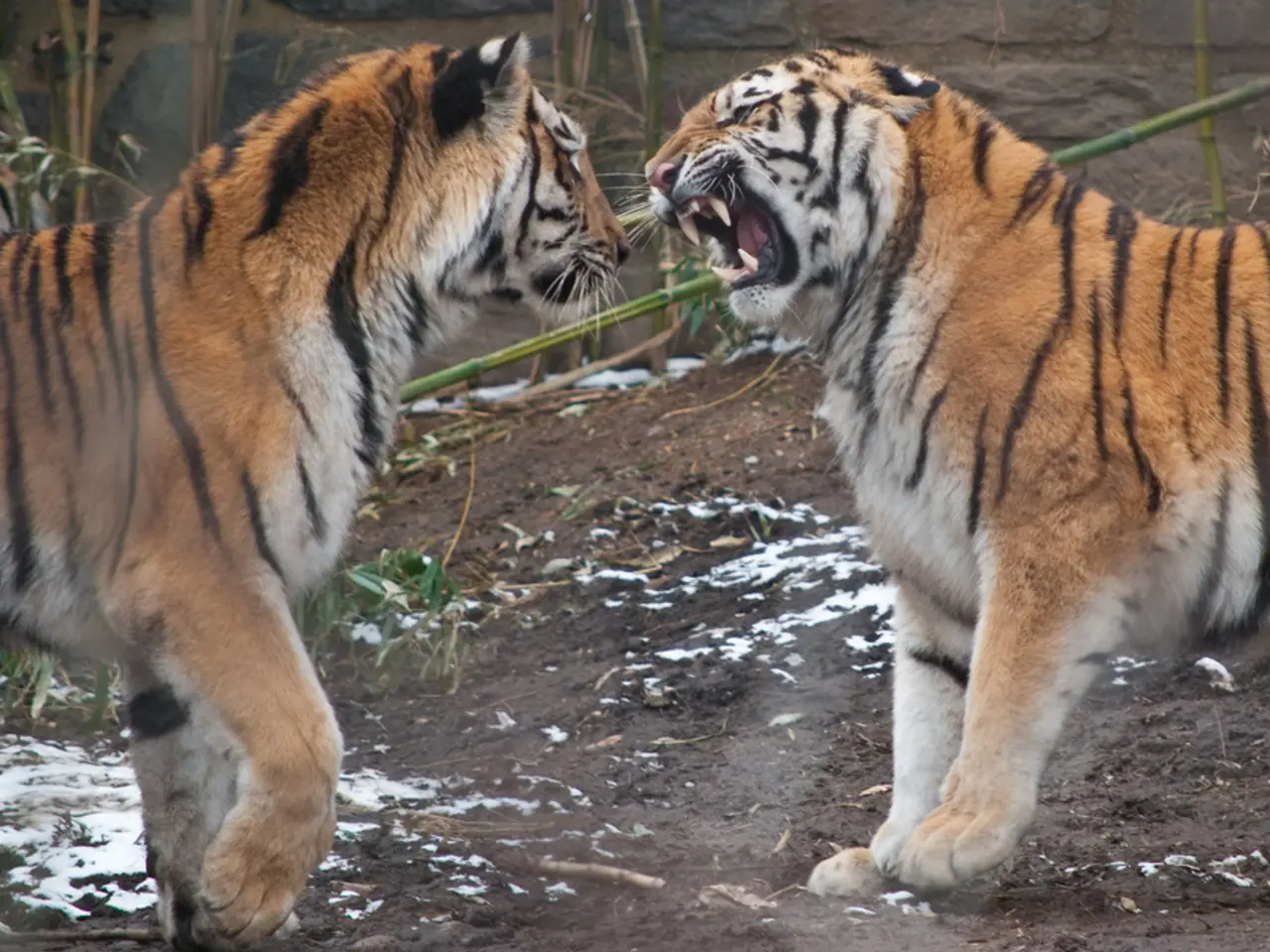Rare Barbary Lion Cubs Successfully Born at Czech Zoo, Achieving Conservation Victory
Barbary Lions: A Step Closer to Reintroduction
The Barbary lion, a subspecies of the Northern lion (Panthera leo leo), once roamed widely across northern Africa, from the Atlas Mountains to the Mediterranean coast. However, extensive hunting and habitat reduction in the 19th and 20th centuries led to their severe decline, and they are now believed to be extinct in the wild.
Currently, the global population of captive Barbary lions is less than 200. Four recent cubs, born at Dvůr Králové safari park in the Czech Republic, are part of these efforts to preserve and reintroduce this majestic species. Jaroslav Hyjánek, Deputy Director of Dvůr Králové, emphasises the importance of having a vision for any animal, especially those on the brink of extinction.
The cubs' parents, Khalila and Bart, have previously parented cubs in 2019, 2020, and 2021. These cubs will be sent to other zoos in the program, contributing to the genetic diversity of the captive population. Dvůr Králové safari park is part of an international endangered species program for Barbary lions.
Reintroducing Barbary lions into the wild is a complex process with potential bureaucratic and practical hurdles. The historical range of Barbary lions, particularly the Atlas Mountains and surrounding areas in northern Africa, remains the primary focus for reintroduction due to their historical role as Barbary lion habitat. However, challenges include significant habitat changes, human impact, conservation logistics, political and regional stability, and prey availability.
Efforts led by Morocco and European zoos aim to establish a vision for Barbary lion reintroduction, acknowledging these challenges and the need for comprehensive ecological and social assessments to determine current habitat suitability and sustainable rewilding strategies. While the goal is to eventually reintroduce Barbary lions into the wild, the current status is limited to captive populations, and significant ecological, genetic, and socio-political challenges remain before successful reintroduction can occur.
Some research suggests that the last wild Barbary lion may have survived until 1958 in Algeria, but the last known photograph of a Barbary lion in the wild was taken in 1925. Despite these challenges, Hyjánek believes that it's worth attempting to reintroduce Barbary lions into the wild, given their historical significance and the importance of preserving biodiversity.
In the past, Barbary lions were used in Roman gladiatorial games and "damnatio ad bestias" or "condemnation to beasts," a form of capital punishment involving Barbary lions. Today, these majestic creatures are one step closer to a second chance at life in their natural habitat. The journey towards reintroduction continues, with the hope that one day, the roar of the Barbary lion will echo once more across the Atlas Mountains.
In the realm of science, ongoing research focuses on understanding the ecological requirements and best practices for the successful reintroduction of Barbary lions, taking into account factors such as lifestyle, habitat, and prey availability.
As part of this initiative, the adoption of home-and-garden practices can play an essential role in creating suitable habitats for Barbary lions in their natural environment, contributing to the preservation of biodiversity.





